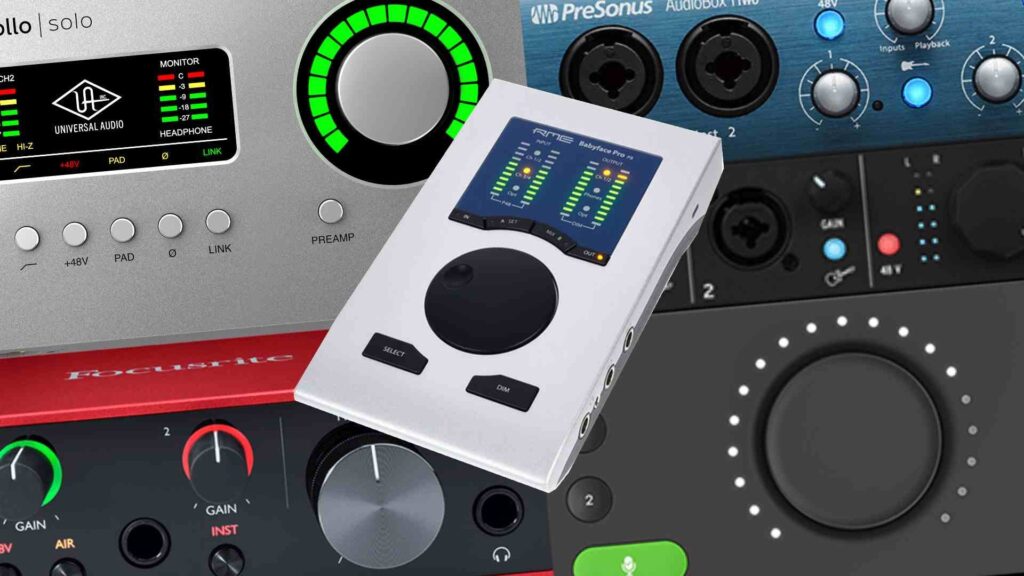Audio Interfaces
An audio interface is a hardware device that facilitates the input and output of audio signals between a computer and audio equipment. It serves as a bridge, converting analog signals from instruments, microphones, or other audio sources into digital data that can be processed by a computer, and vice versa.

Key Functions:
- Analog-to-Digital Conversion (ADC): Converts incoming analog signals into digital data for recording and processing.
- Digital-to-Analog Conversion (DAC): Converts digital audio from the computer back into analog signals for playback through speakers or headphones.
Features:
- Inputs and Outputs (I/O): Audio interfaces typically have multiple input and output channels. Inputs can include XLR (for microphones) and 1/4″ jacks (for instruments), while outputs can be for studio monitors, headphones, or other devices.
- Preamps: Built-in preamplifiers boost the low-level signals from microphones to a usable level without adding significant noise.
- Phantom Power: Supplies 48V power required by condenser microphones.
- Connectivity: Connects to computers via USB, Thunderbolt, or FireWire, providing both power and data transfer.
- Latency Reduction: Designed to minimize latency (delay) in signal processing, crucial for real-time monitoring and recording.
Applications:
- Recording: Used in home studios and professional environments to record vocals, instruments, and other audio sources.
- Live Performance: Facilitates the integration of digital effects and playback in live setups.
- Podcasting and Broadcasting: Ensures high-quality audio input for spoken word and interviews.
Advantages:
- Sound Quality: Improves the fidelity of recordings and playback compared to built-in computer audio systems.
- Versatility: Supports various types of audio connections and enhances the functionality of a digital audio workstation (DAW).
An audio interface is thus an essential tool for anyone involved in music production, sound engineering, or any audio-related field, providing high-quality sound and flexibility in a digital setup.
For a A-Z on what a audio interface terminology go to this link.
